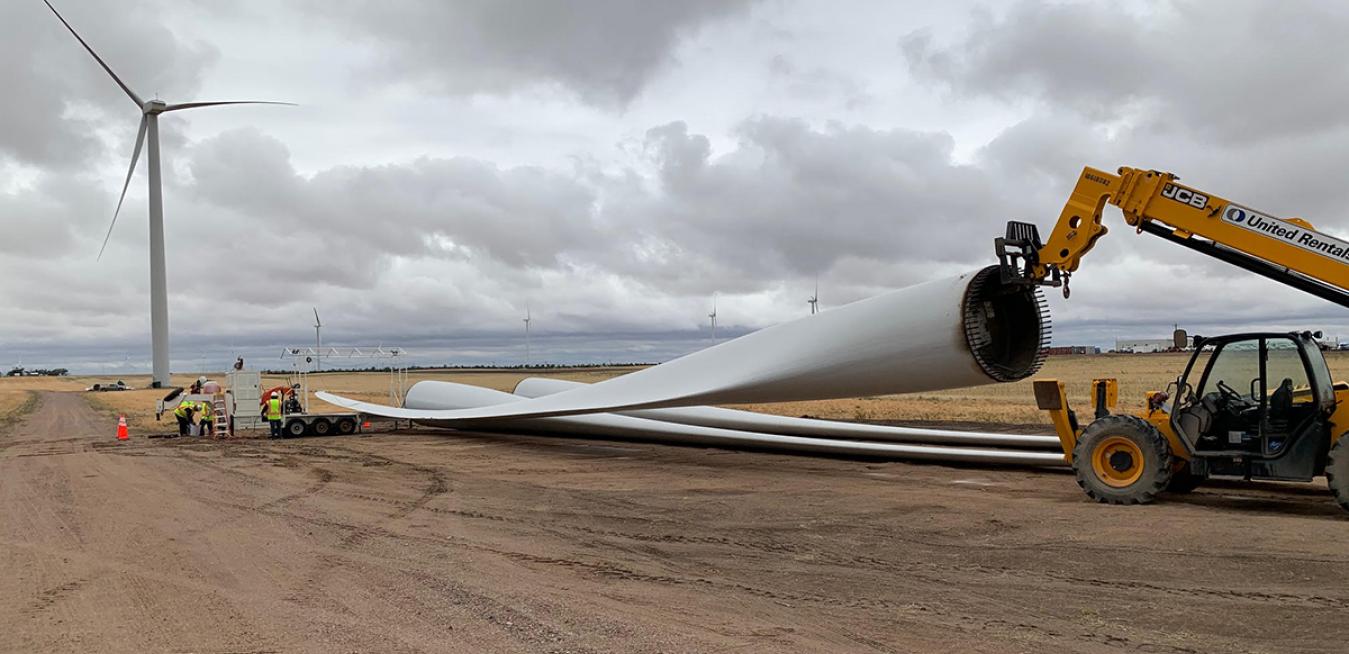A SECOND WIND
As more countries press ahead with ambitious climate goals, wind energy is an industry with the breeze to its back: In 2019 alone, the electricity generated from wind turbines worldwide avoided the equivalent of 42 million cars’ worth of CO2 emissions. But as the industry has grown sharply over the last three decades, more of the turbines in its service have begun to mature — or gotten upgraded so that they can generate more electricity. That poses a question of what to do with parts when they’re no longer needed. Now GE Renewable Energy has identified an answer: Those blades can be recycled. They just won’t be blades anymore.
Concrete benefits: GE Renewable Energy just signed an agreement with Veolia North America that will give old wind turbine blades a new job altogether — they’ll be shredded and blended with various components to create material suitable for the coproduction of Portland cement, the most common ingredient in concrete. With VNA responsible for processing the blades to make them usable for the cement industry, the two companies expect to recycle thousands of blades through this agreement. It’ll save those massive parts from going to the landfill, but that’s just the beginning of the environmental benefits: When fed into cement kilns, the material could help cement manufacturers lower CO2 emissions by as much as 27% compared to traditional manufacturing processes. “The resources will now be used for something new rather than being buried in the ground,” said GE Renewable Energy’s Michelle Simpson.
The retired blades can be as long as a single wing of the Airbus A380, the world’s largest passenger airliner. Click here to find out more.
LOFTY AMBITIONS
In terms of fuel efficiency, commercial aviation has come a long way: The amount of fuel used per passenger has dropped 80% since 1960. But those savings have been offset by the surging growth of passenger aviation in the same period, leading aircraft and engine designers to search for new ways to reduce aviation’s impact on the environment. “We need something fundamentally different to take the next leap,” said John Yagielski, senior principal engineer at GE’s Research Center in Niskayuna, New York. Yagielski and his colleagues are at work on something fundamentally different indeed: an electrically driven propulsion system powerful and light enough to keep aloft a 175,000-pound commercial airliner and its 175 passengers.
2050 vision: That goal is being backed up by $4.8 million in new research grants from the U.S. Department of Energy’s Advanced Research Projects Agency-Energy (ARPA-E) — and it will be no small feat. The challenge is figuring out how to convert a cleaner-burning biofuel into megawatts of electricity, and then how to turn that electrical energy into enough thrust to fly a Boeing 737-class jet. But that challenge is also an invitation for the GE engineers to reimagine what an aircraft engine looks like, drawing up new designs that might be more efficient for flight than the traditional model of engines beneath each wing. “It’s about proving the feasibility of a number of these technologies and convincing ARPA-E to invest in building a complete prototype and testing it,” Yagielski said. “This is for aircraft in the 2050s.”
Learn more here about the technologies that could go into this futuristic engine.

— QUOTE OF THE DAY —
“It’s a very elegant solution, because it addresses several requirements for the cement production process, making it more sustainable from multiple perspectives.”
— Michelle Simpson, productivity and technology leader at GE Renewable Energy
Quote: GE Reports. Images: GE Renewable Energy, Getty Images.





